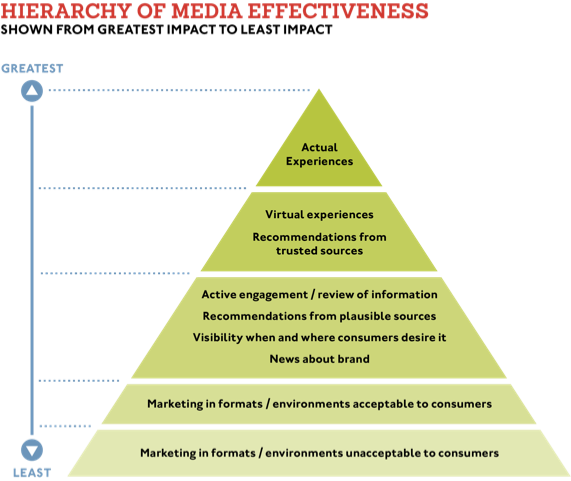Media’s influence on purchase decisions
Want to learn more about this topic? Watch our webinar, The Future of Consumer Reviews for Healthcare Organizations.
Online reviews outperform paid media channels
What makes people buy what they buy? Consumer preferences have always been influenced by advertising, word of mouth and the recommendations of friends and experts. But in the last 15 years, the Internet has become the foremost influence on the consumer’s decision and purchase process, as broadcast’s influence shrinks as channels serve ever smaller segments of the market.
Consumers seek brand information online
How big is the Internet’s influence? A 2007 report titled, “Frames of Reference: Online Video Advertising, Content and Consumer Behavior” (from Online Publishers Association and OTX) stated that the internet influenced 48-57% of purchase decisions at varying stages of consideration, compared to 20-26% influenced by word-of-mouth and just 18-29% for all other media (radio, magazines, newspapers and television) combined. The market has responded, as television advertising revenue declined sharply and internet advertising grew.
Besides influencing purchase decisions, the Internet, especially websites, blogs, and social media, provide media options that didn’t exist 20 years ago. These are prime examples of owned media: “properties” that destinations and resorts create, manage and use to promote themselves for maximum visibility and deeper connections with customers. 

Delivering communications when and where appropriate
The diagram above illustrates the hierarchy of effectiveness and impact of marketing communications and media’s ability to influence buying decision. It illustrates the power of word of mouth and consumer-generated content. After actual experiences, recommendations and reviews have the greatest impact on the purchase decision. While paid media generates broad awareness, it’s not a trusted source for consumers.
Relevant, believable and trusted sources
Today, consumers are skeptical and suspicious of advertising claims. TV, print and other broadcast media represent paid messages, controlled by the sellers. For greatest impact (and return on investment), communications need to be relevant and believable. Those originating from trusted and plausible sources carry even more influence. Owned or ‘earned’ media vehicles such as websites, blogs and reviews are more appropriate for these direct and honest communications than paid media.
Are you connecting with consumers in the media they choose? Is your brand represented where they’re looking for information? What are people saying about your product in the social channels? When planning a media strategy, marketers need to understand how various channels relate to the consumer’s stage in the purchase decision.
